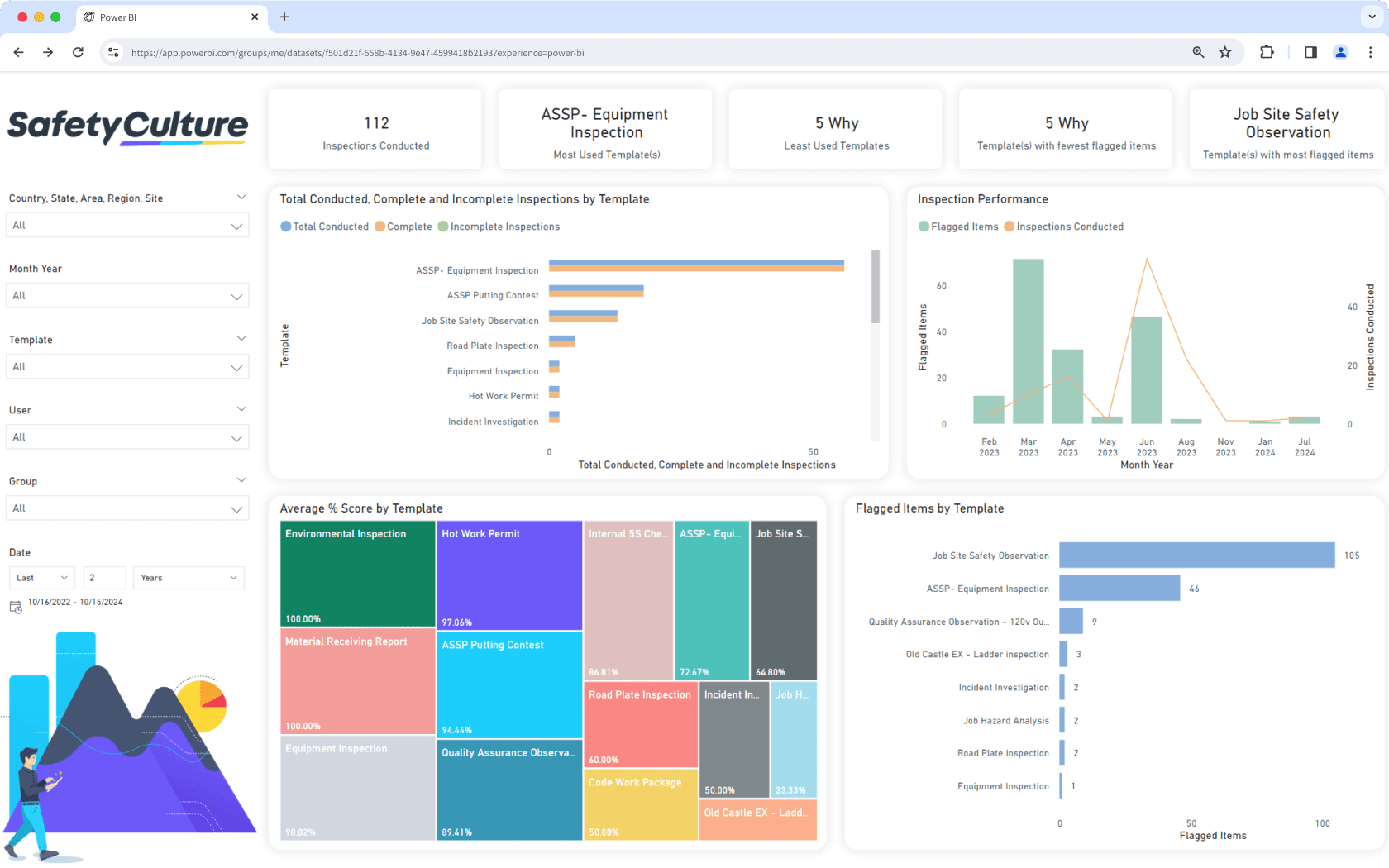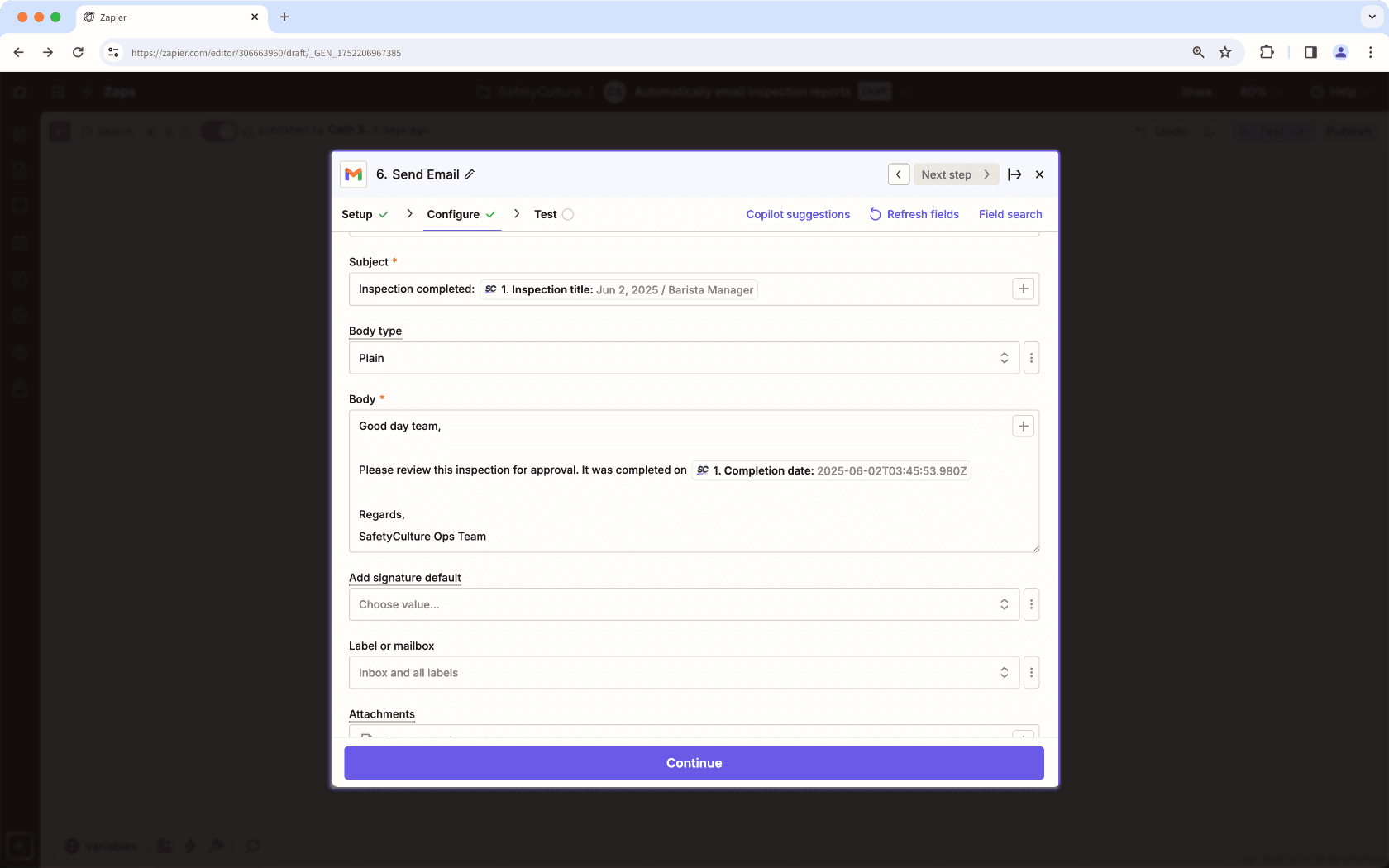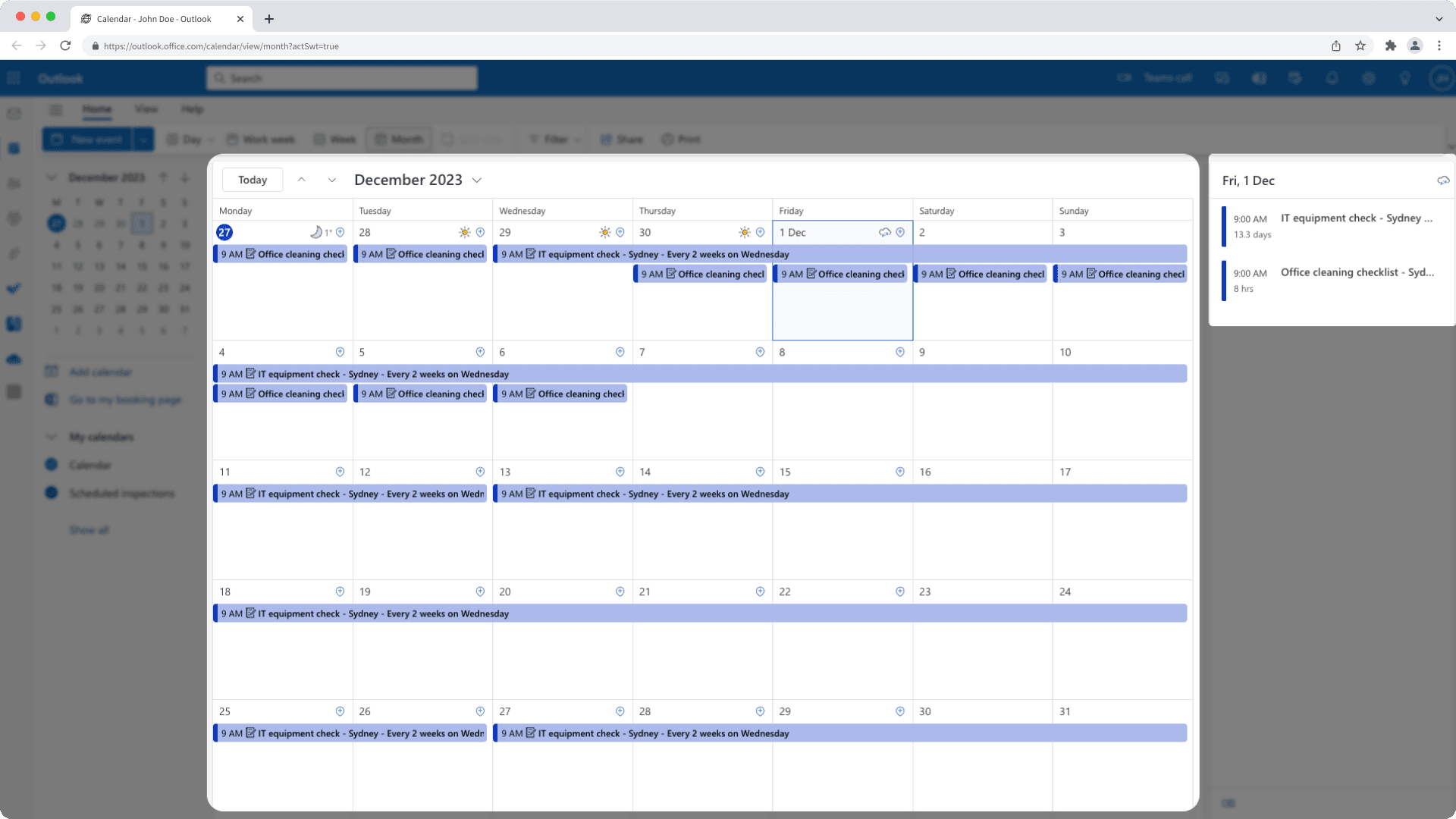- Integrations
- Direct integrations
- Get started with integrations
Get started with integrations
Take a look at the main ways of integrating with SafetyCulture.Why use integrations in SafetyCulture?
We understand that software integration is essential in most organizations to automate repetitive tasks, reduce human error, and centralize data to a single source of truth. Whether it’s automatically uploading inspection reports to your cloud storage or bulk exporting data for analysis, integrations can streamline processes and unlock new efficiencies. With SafetyCulture, the opportunities to integrate processes and optimize your workflows are endless.
This article explores the primary ways to integrate with SafetyCulture, allowing you to:
Visualize data for better decision-making.
Automate workflows to save time and reduce errors.
Synchronize data to connect SafetyCulture with existing business systems.
Provision users efficiently to manage teams at scale.
And, build custom solutions tailored to your needs.
Integrations are only available to organizations on SafetyCulture Premium Plan or Enterprise Plan.
Data visualization
Integrating SafetyCulture with data visualization tools like Power BI and Tableau transforms data into clear visuals that drive more thoughtful decision-making insights. Instead of analyzing raw spreadsheets or static reports, your team can leverage dynamic dashboards to monitor safety trends, compliance levels, and operational risks in real-time.
Additionally, automated updates ensure that dashboards always reflect the latest data, reducing human error, and improving efficiency in your team. With these powerful visualizations, teams can move beyond reactive decision-making and proactively address risks, optimize processes, and enhance overall workplace safety.
Using tools such as the SafetyCulture Exporter or feed APIs is a great starting point for extracting data. These tools allow you to spot recurring issues, identify high-risk areas, and track performance over time, all presented in a format most relevant to your organization. For example, administrators can track organization-wide safety performance at a glance, while managers can drill down into specific inspection results and open actions.

Using Power BI connector is another great option for exporting data. However, for organizations with a large amount of data, it’s best to use SafetyCulture Exporter or feed APIs to load these to a database or data warehouse as a source instead.
Workflow automation
Integrate with SafetyCulture to connect data from inspection reports, action items, sensor readings, and more, across platforms using intuitive interfaces and click-based templates. By automating routine workflows, reducing manual data entry, and enabling real-time updates, your team can respond to issues faster, track compliance more effectively, and make data-driven decisions with ease.
Direct integrations
Connect your SafetyCulture account to other platforms to automate workflows and improve team efficiency. For example, automatically export inspection reports to your cloud storage or surface key data in shared dashboards, making it easier to access and act on insights.

Zapier and Power Automate
Use third-party tools like Zapier and Power Automate to streamline repetitive tasks with easy-to-use interfaces and click-based templates. These platforms let you send and receive SafetyCulture data between other apps with little to no code required.

Public API for custom solutions
Build your own integrations with SafetyCulture’s public API to support more advanced or tailored workflows. This allows you to create flexible automations and connect to industry-standard tools so you can get the most out of your SafetyCulture data.
Data synchronization between systems
Working across different systems can be time-consuming and increases the risk of errors. With SafetyCulture, you can sync data from your existing systems, such as assets, directly into the platform. This reduces manual data transfer, keeps information up to date, and simplifies tasks such as maintenance, tracking, and reporting in one place.
Asset management systems
Connect your existing asset management system to SafetyCulture to keep asset data consistent and reduce manual updates. By syncing information like asset names, IDs, and maintenance history, your team can spend less time on administrative tasks and more time keeping assets operational. With everything in one place, it’s easier to plan maintenance, track usage, and assign follow-up actions, helping you avoid downtime and stay audit-ready.

Calendar sync for inspection schedules
Ensure your team can stay on top of inspections by syncing SafetyCulture schedules with calendar tools like Google Calendar or Outlook. This gives teams better visibility of upcoming inspections, especially when they're recurring or time-critical. Calendar syncing helps reduce missed tasks, improve accountability, and keep schedules running smoothly without needing to switch between platforms.

User management at scale
Easily manage access to SafetyCulture as your team grows. With single sign-on (SSO) and automated user provisioning, you can reduce manual administrative tasks while keeping your organization secure. Connect to identity providers like Azure AD or Okta to automatically add and manage users based on your existing systems. This means faster onboarding, fewer access issues, and more time to focus on the work that matters.
Single sign-on (SSO) authentication
Allow your team log in to SafetyCulture using their existing work credentials. By setting up single sign-on (SSO), users can access the platform securely without needing to remember another password and effectively reducing password fatigue. It’s a simpler, safer way to manage access, especially across large teams.
Automate user management with user provisioning
With user provisioning, you can automate account creation in SafetyCulture using your single sign-on identity provider (IdP). When a new employee is added to your IdP, a SafetyCulture account is automatically created for them, saving you time and reducing manual setup.
You can also manage key user details like names, emails, group memberships, and user fields directly from your IdP. This helps keep your data consistent across systems and reduces the risk of manual errors.

Opportunities for integration are endless. We encourage you to experiment and try different solutions that fit your business’s needs.
Was this page helpful?
Thank you for letting us know.